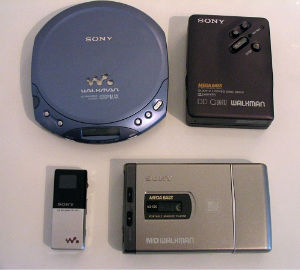Sony’s Five Biggest (Recent) Mistakes
It is, I admit, sometimes hard not to feel sorry for Sony.
The electronics giant, who own some of the most recognizable brands in the industry, is, to put it mildly, no longer the industry leader it once was.
To be sure, they have gotten themselves out the rut they have been in for years. They’re embracing widely used formats like ePub or DivX; the PS3 is finally appealing; and their launch of Google TV is a sign of a company looking to change.
But for at least a decade now, Sony has been hamstrung by a series of mistakes that have cost it its leadership position. Whether their disastrous early attempts at digital music or their slow reaction to the networked world, Sony have been stymied by the contemporary tech world, often getting by on brand recognition and their engineering expertise alone.
But unfortunately, Sony are still making mistakes. And you don’t even have to go back that far to find them. Here are Sony’s five most recent egregious decisions:
PSP Go… Nowhere
The PSP Go may have been one of the most blatantly misguided product launches in recent tech memory.
At $249, the all-digital-download handheld gaming machine was $80 more expensive than the old PSP that used discs… that also did everything that the Go did. People with a collection of physical games had no way to transfer their games to the device. Selection on the online store was spotty and random, and for around the same price as a Go, you could get an iPod Touch.
Sales were and remain an utter disaster – largely because there’s just no compelling reason to buy one other than size. All in all, the PSP Go was an ill-considered, unmitigated failure, and instead of extending the life of the PSP, it may have shortened it.
Xperia X10: Awesome A Year Ago?
The Xperia X10 promised to be an actual competitor in the smartphone world. And sure, in Europe and Japan, it’s sold well.
But with the recently announced delay to the upgrade to Android 2.1, the Xperia X10 – which runs Android 1.6 – looks a bit lame next to the competition, many of which are now running Android 2.2 (an upgrade the X10 is likely never to get).
What’s more, though there are many impressive aspects to the phone, it’s plagued by buggy performance and a touchscreen that is markedly less accurate and reliable than the competition.
What’s causing the delay is almost certainly Sony Ericsson’s own tweaks to Android. SE should have never tried to build out their own UI if they couldn’t keep up with developments in Android. Who now will feel safe buying a Sony Ericsson phone in the future, knowing they’ll likely be left behind?
The phone had potential. The software, touchscreen and update schedule, however, were serious mistakes.
Qriocity? Yes, That’s One Thing We Feel
Qriocity – pronounced ‘curiosity’ – was supposed to be Sony’s vision of a huge online service where you download and stream movies and music from anywhere, available across a variety of hardware.
Yeah, not so much.
What Qriocity has ended up being so far is just another logo on the boxes of internet-enabled Sony TVs. Rather than the incredible service one might want, you have another mediocre movie streaming doodad. Sure, a cloud-based music service is on the way – but almost a decade after iTunes launched, it pushes the very definition of ‘too little, too late’.
Worse, Qriocity simply replicates the function of the Playstation Movie Store. Instead of either simply merging the two or putting a Qriocity app on PS3’s and PSPs, you have a ‘centralized movie service’ not on, oh, about a 100 million Sony Playstation products. It’s baffling.
Until Sony can make the service compelling and widely available on a variety of platforms – including the Playstation 3 – Qriocity will remain a curious mistake.
Five Hundred and Ninety-Nine Regrets
Oh, speaking of the PS3…. Right now, for $299, the PS3 is pretty amazing. It has a great game library and also does tons of other things like Blu-Ray, Netflix, Hulu Plus and DivX .
But when it launched a scant four years ago… wow. At $599, the PS3 may have been ‘good value’ – Blu-Ray was new and, technically speaking, the Cell processor was extremely powerful – but it was waaaay too expensive for a video game console. What’s more, Sony invested $2 billion into the creation of the PS3’s processor alone. Given how long the gaming division has been bleeding money, it’s unlikely Sony will ever recoup their investment.
It’s hard to say what Sony could have done differently. What’s clear, however, is that despite their brave face, Sony must be feeling an enormous amount of regret for this mistake.
Failing to ‘Read’ the Future
In yet another sign of Sony’s frustrating relationship with the new, their line of Reader ebook devices were among the very first to use the new e-Ink technology.
Alas, Sony’s headstart was completely negated by their attempts to simply recreate a paper reading experience, instead of doing what Amazon did with the Kindle: reshape how people bought and consumed books.
Sure, the Sony Readers are nice machines. The new ones look great. But by continuing Sony’s emphasis on devices rather than ecosystems, Sony got lost in the shuffle again.
A Hopeful Future?
With the PS3 firing on all cylinders and the arrival of Google TV, is Sony ready to make a comeback? Their embrace of open, the cloud and the web seem like good signs.
But there’s also a change they will remain the has-been of the tech world: constantly playing catch-up while innovators like Google, Apple and Amazon steal their thunder.
Which do you think it will be?





